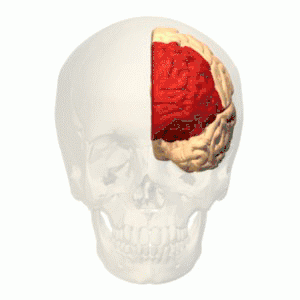
We’ve all got that chair in our room. You know the one; barely visible beneath the avalanche of items accumulated over time—things you once needed urgently but now seem to have forgotten. The brain’s got its equivalent memory dumpyard. For the information you need right now and never again, our brains use a nifty cognitive process known as working memory.
What is working memory?
When you want to keep something in mind, what you’re really referring to is using your working memory to store information temporarily. But there’s more to working memory than just storing information.
Working memory is a cognitive system that temporarily holds but also manipulates information in the brain, enabling activities such as reasoning, learning, and understanding. It provides a mental workspace for holding and processing relevant information over short periods.
The human mind is complex, employing a range of cognitive processes for different tasks. Working memory is one such process out of many. Think of it as a mental notepad—a scrappy piece of paper where we store what we need just for the moment. Essentially, it serves as a short-term storage and working space.

For instance, imagine navigating a new city. As you wander the new streets, you rely on your working memory to recall directions. It enables you to temporarily retain and manipulate spatial information, such as the locations of landmarks needed to navigate from one place to another.
Earl Miller, a scholar of neuroscience and professor at the Picower Institute at MIT, likened the cognitive process to a steering wheel of sorts.
“It is the main mechanism by which your brain wrests control from the environment and puts it under its own control. Any simple creature can just react to the environment. But what higher order animals have evolved is the ability to take control over their own thoughts,” he said in a press release.
Short-term memory versus working memory
Although a short-term process, working memory isn’t a subset of short-term memory. The two terms are often used interchangeably but they’re quite different.
“There are many different types of working memory, and over the past 40 years, scientists have been trying to work out how these are represented in the brain,” explained Dr. Ivan Voitov, a research fellow at the Sainsbury Wellcome Centre at UCL, who studies interactions in the brain that power working memory.
One of the primary distinctions between the two processes lies in the ability to manipulate information. Short-term memory acts as a temporary holding pen for information, keeping it for about 20 to 30 seconds with a capacity of roughly 7±2 items, and doesn’t involve the active manipulation of this data. In contrast, working memory not only stores information but also actively works with it, engaging in tasks such as reasoning, learning, and planning.
Consider this example: when presented with a set of numbers like a phone number, memorizing the set engages your short-term memory. However, with working memory, it isn’t just about memorization. It’s the capacity to actively manipulate and process this set of numbers, such as by adding them up, that truly engages working memory.
As the name implies, quite literally, your brain is at work. Whether it’s solving a math problem in your head or simply maintaining a conversation while mentally planning your next words, you’re actively involved in a process.
Keep in (Which Part of) Mind?
Working memory is the the desk at which our brain works but where exactly is this desk? Well, it’s all over the place. Areas such as the parietal and prefrontal cortices, thalamus, and basal ganglia are all involved.

It isn’t groundbreaking news that different parts of the brain contribute to the mechanisms of working memory. Even long-term processes like implicit memory aren’t confined to a single part of the brain. What is less explored, however, is just how interconnected these processes are.
Insights from research
Priya Rajasethupathy, an assistant professor at Rockefeller University and a neuroscience researcher, says that previous research indicates that activity in multiple brain regions was involved in working memory.
“There were in fact hints from earlier research that multiple brain structures are somehow involved in working memory,” explained Rajasethupathy.
Despite such clues, a disproportionate focus on the prefrontal cortex skewed scientific literature and popular perceptions.
To counter such bias, Rajasethupathy collaborated with Praveen Sethupathy, a researcher at Cornell University, in a 2020 study to investigate the mechanisms of working memory in a special population of mice.
“Unlike standard lab mice, these mice have a level of genetic diversity mirroring that of human populations,” explained Sethupathy.

The team conducted maze experiments using the time spent in new parts of the maze as a metric of working memory. They recorded a wide range of variations in the rodents’ performance. They also genetically analyzed the mice.
The analysis revealed a specific gene that accounted for the variations in the mice. High-performing mice exhibited increased gene activity compared to low-performing mice.
The surprising part? The location of the gene. It was isolated not in the prefrontal cortices but in the thalamus of the mice’s brains.
The prefrontal cortex is involved in complex behaviors such as decision-making and social interaction, whereas the thalamus acts as the brain’s relay center, processing and transmitting sensory information to the appropriate areas of the cortex.
Reflecting on their findings, Rajasethupathy expressed, “It became increasingly clear that persistent activity in the prefrontal cortex, while important, can’t be the whole story.”
The importance of working memory
It’s hard to work without a proper workspace. It’s the same thing inside your head. From decision-making and problem-solving, working memory affects many everyday tasks, including:
- Attention Control: Enables selective focus on important stimuli while effectively filtering out distractions.
- Task Switching: It aids in switching between different tasks by retaining goals and requirements in memory.
- Time Management: Assists in planning and organizing by retaining timelines in mind.
- Social Interactions: Plays a crucial role in social settings by retaining pertinent information regarding social cues, norms, and conversation topics.
- Motor Skills: Supports the execution of motor tasks by holding information about movement sequences and coordination requirements
So, the next time you find yourself navigating a new city or following instructions for a new recipe, remember the indispensable role of working memory. It’s not just a fleeting thought or a passing moment—it’s the cornerstone of our cognitive abilities, shaping how we perceive and interact with the world around us.






